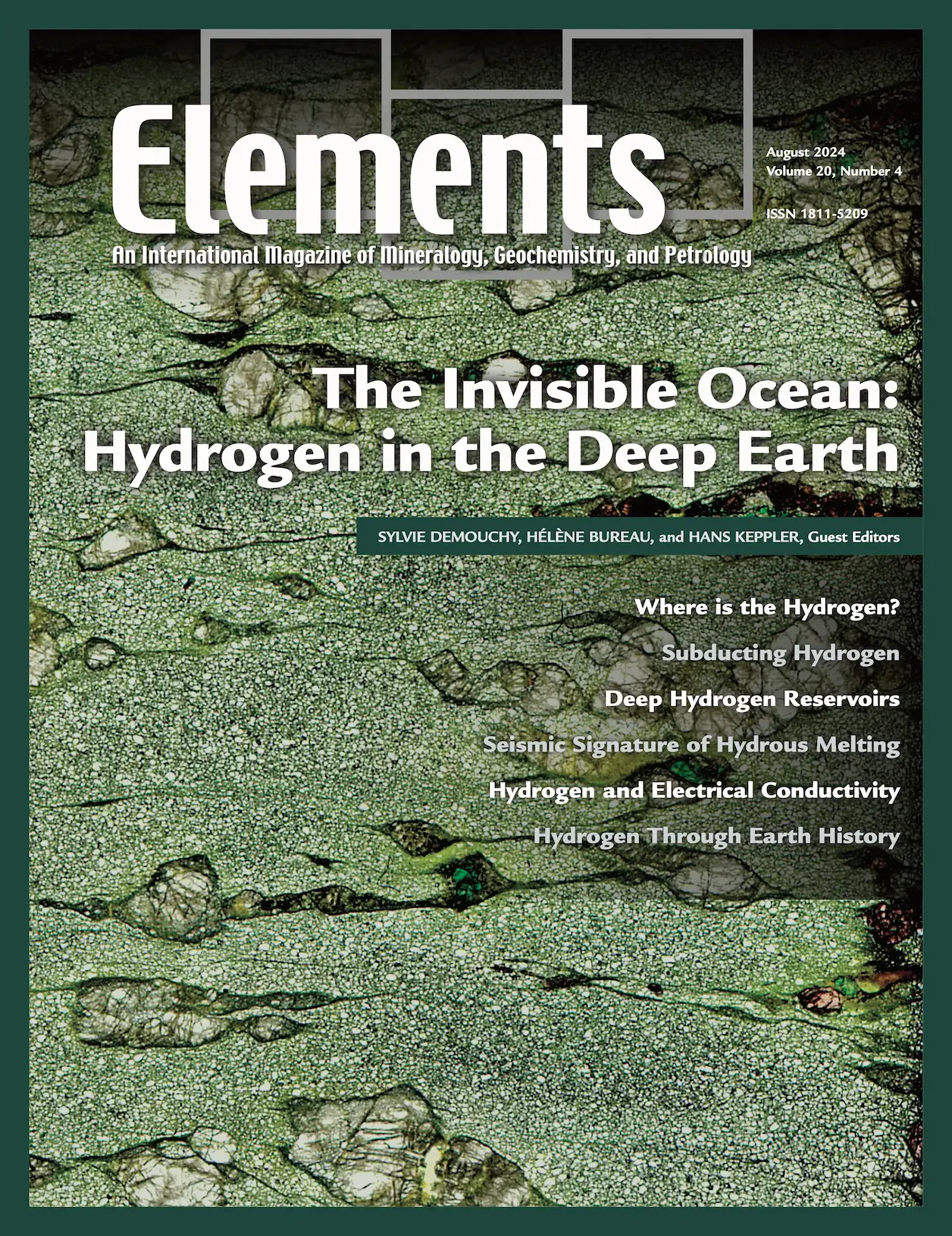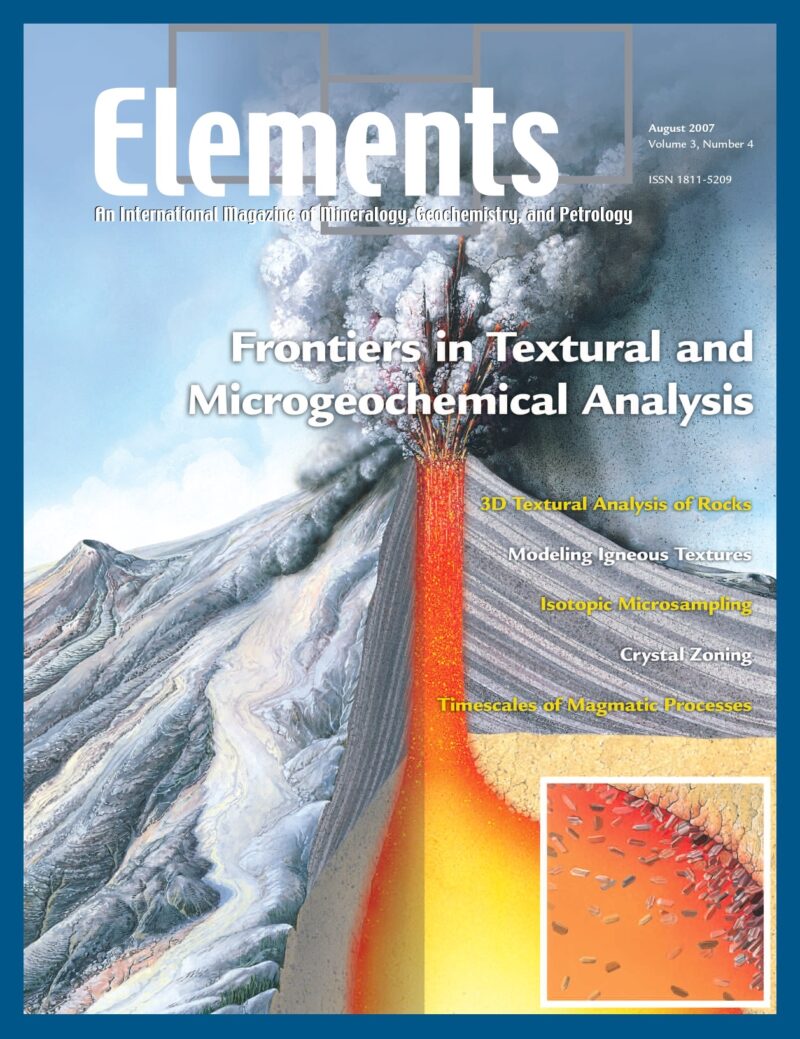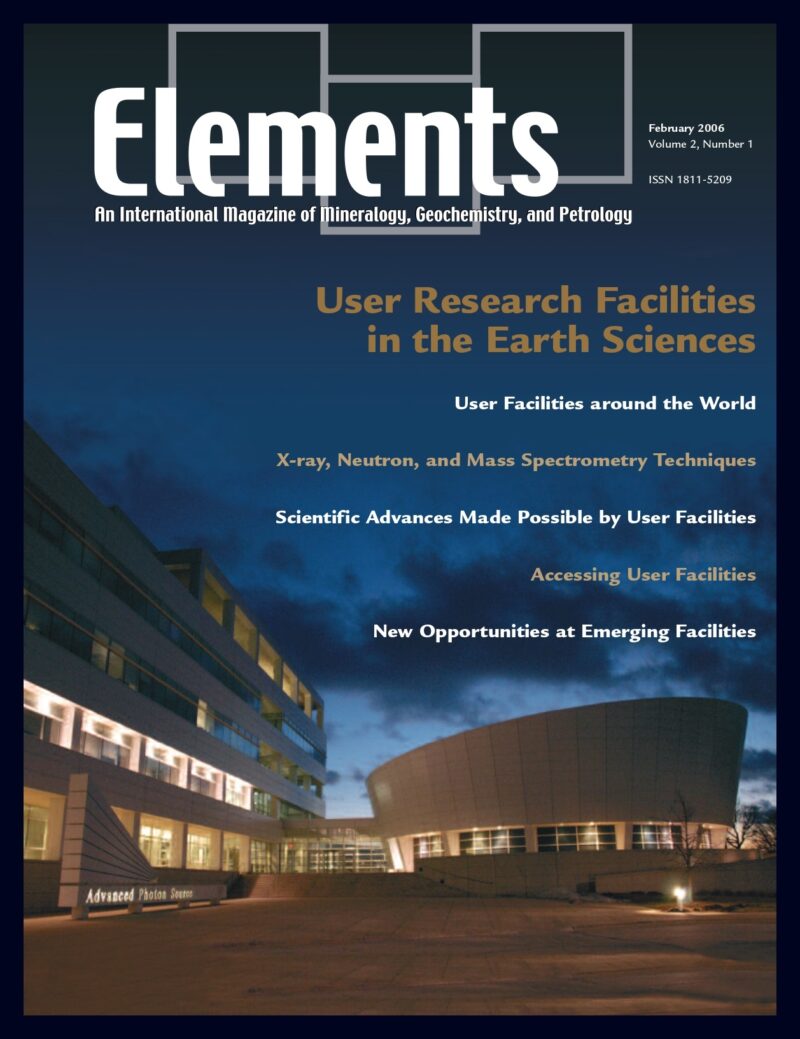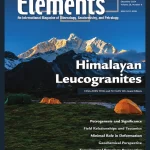
Himalayan Leucogranites (Poster v20n6)
October 25, 2024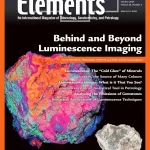
Behind and Beyond Luminescence Imaging, October 2024, Vol. 20, No. 5
October 25, 2024The Invisible Ocean: Hydrogen in the Deep Earth, August 2024, Vol. 20, No. 4
$20.00
Hydrogen is the most abundant element in the universe and its distribution, transfer, and speciation in the deep Earth remain a fascinating topic of ongoing research. We review the most notable discoveries constraining the H cycle in the deep Earth. This includes new methods for detecting hydrogen, insights into the size of deep reservoirs, and new constraints from inclusions in ultradeep diamonds.
The Invisible Ocean: Hydrogen in the Deep Earth
August 2024, Vol. 20, No. 4
Hydrogen is the most abundant element in the universe and its distribution, transfer, and speciation in the deep Earth remain a fascinating topic of ongoing research. We review the most notable discoveries constraining the H cycle in the deep Earth. This includes new methods for detecting hydrogen, insights into the size of deep reservoirs, and new constraints from inclusions in ultradeep diamonds. Advances in seismic and magneto- telluric imaging provide unique data on the storage and mobility of water in Earth´s interior. Models of the early Earth and of its habitability critically depend on the behavior of hydrogen in a magma ocean–atmosphere system. Later in Earth history, water may have been essential for establishing plate tectonics, a phenomenon making Earth a unique planet.
Why You’ll Love Elements Magazine:
- Expert Contributors: Articles written by renowned researchers in the field of geoscience.
- Engaging Content: Join a community of readers who are passionate about Elements.
- Exceptional Quality: Each issue is printed on high-quality paper with stunning visuals and detailed illustrations that bring complex scientific concepts to life.
Order your copy of the August 2024 issue of Elements magazine today and explore The Invisible Ocean: Hydrogen in the Deep Earth.
Related products
-
Frontiers In Textural And Microgeochemical Analysis, August 2007, Vol. 3, No. 4
$20.00Recent advances have been made in high-resolution in situ methods to image mineral growth patterns, analyse compositional and isotopic zonation, and improve our ability to visualize, study, and model rock textures in three dimensions. These advances provide a significant step forward in the understanding of how rocks form and the history they can tell us.
-
User Research Facilities In The Earth Sciences, February 2006, Vol. 2, No. 1
$20.00Earth scientists rely on effective access to user research facilities that provide state-of-the-art analytical instrumentation. This thematic issue focuses on some of these facilities and how to use them.
-
Genesis: Rocks, Minerals, And The Geochemical Origin Of Life, June 2005, Vol. 1, No. 3
$20.00Few scientific questions so capture the public imagination, or provoke such lively debate, as how life on Earth emerged. In this issue of Elements, four of the most creative minds in origins research present their original insights on the geochemical origins of life.

